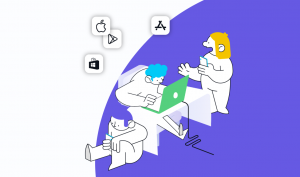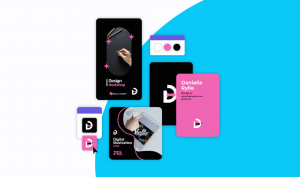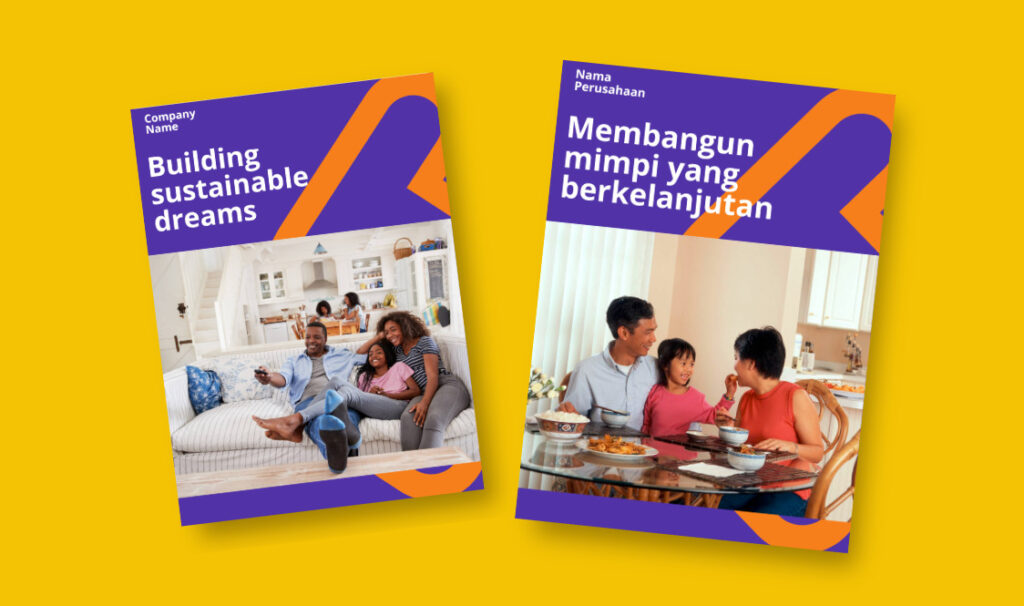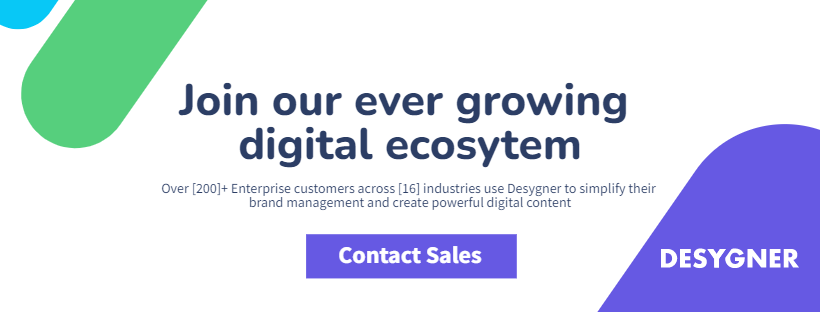How to Simplify High-Visual Content Localization
Content localization matters if you want to engage your target audience effectively. And it matters even more if you’re going to build a recognizable global brand and unify your marketing operations for the best results.
The critical thing here is to understand that the final product of localization depends on your content creation process. The process requires a good team, tech stack, and staying consistent with quality standards.
Solving the tech stack issues is easy since you could use an enterprise graphic design tool like Desygner. The more challenging problem of content localization is how you do it. Localization can be a complex process, so it’s vital to have an efficient approach before you begin translating. Keep reading to find out how to create high-quality localized content.
Systematic Approach to Content Localization

See How We Can Help, Contact Us Today
Content operations differ little between businesses. Marketing managers issue content briefs, send them to copywriters and graphic designers and wait for the results. Once they get the final visual, you approve it and publish it.
The content localization process is almost the same, with the difference in the appropriation for specific markets. Usually, you have the source file, which you share with marketing teams to localize the content. They must translate the content, typeset it, and prepare it for publishing. But none of that is what makes your localized content amazing.
If you have a franchise or a business with multiple offices, launching a campaign in multiple languages and/or target markets can be challenging. The graphic designers sent out templates for each market and had to manually update them when each office needed to change something in their respective market. Yet, the campaign failed to yield any measurable result that matters.
That’s because much time was spent creating materials. The goal isn’t to translate brochures, web pages, or social media posts into multiple languages but to ensure that the content connects with the target market in a way that is most appealing. And there’s a process for creating content of that quality.
Your Success is a Reflection of Your Process
Michael Gerber, the author of E-Myth, popularized the idea of thinking of your business as a franchise. The goal of a business is to become a turn-key operation, which means it could replicate the whole operation in any market. Once you set it up, it’ll work on the same principles until you scale it to the same level as your first business.
He was talking about franchises. The main advantage of a franchise is that there are business development, sales, and marketing principles you could apply to a new franchise. In this sense, it means that there are content assets you could reuse to market your services and products.
The correct process allows you to do this in any market. Also, it reduces the learning curve for new employees and keeps the quality of content consistent. But, before you even get to consistency, you must build the process before anything else.
Consistency
First, take a look at how you should structure your process. Your process should look like this:
- Create a brief for the marketing team
- Assign tasks
- Send content and context to translators
- Deliver the content to the graphic design team
- Edit existing materials with new content
- Match the quality standards of the content
- Approve for publishing
- Publish the content
Execution is the primary issue for most businesses. We have a common observation from our users that Desygner helps them structure the content creation process. For example, maybe you have a marketing manager that doesn’t know how to write a content brief.
They’ll be left to work independently even if you have a superstar team. That leads to less brand enforcement and unsatisfactory content. It’s impossible to have an excellent final product. But, with a proper process, organizing your team is much simpler.
Teamwork Makes the Dream Work
For content localization to work, you need a multi-talented team. You need a marketing and content team with experience in global markets. And, you want a graphic designer with comprehensive knowledge of a locale.
Native translators with advanced language proficiency in the target language. The hard part of content localization is to adapt the content for a specific market. The content you publish in Europe will look much different than the one you publish in Asia.
Core skills for your designers should be graphic design, typesetting, and an understanding of the global market. A marketing manager with experience could build a content creation process, but the people make it work.
Content Localization Challenges

Discover comprehensive solutions for all your localization goals
Go to Marketing Localization Engine
1. Language
The core problem of content localization is the linguistic and cultural adaptation of the content. When you think about it from the business development perspective, language is a huge obstacle to overcome. Every language has a unique usage pattern and meaning. Small errors made when translating into a foreign language can dramatically alter the meaning of the information. Translating content from English to German requires a different approach to translating content from English to Chinese.
When you drill it down to the actual process, the latter language pair requires that a designer must use new fonts and characters and work with different design elements such as colors, images, symbols, and icons. A brochure copy that has been translated from English to Chinese may appear very differently.
2. Typesetting Issues
Typesetting is a crucial part of the process. During the typesetting, you’ll format the translated text inside the template or graphic design software such as Adobe InDesign.
The greatest challenge of typesetting is to make the translated text read naturally. Each language has its own set of rules. There is a lot that needs to be considered before the typesetting process begins. When positioning translated text, take into account the following crucial elements:
- Text expansion and contraction
- Bidirectional script (right-to-left languages)
- Line breaks
- Font rules (capitalization, alignment, italic, bold, etc.)
- Punctuation
Professional multilingual typesetters made all the integral changes to make certain that every textual content fits nicely inside the template and maintains the integrity of the original design.
3. Design Elements
The final obstacle of content localization is getting the design together. Sometimes, you’ll encounter issues like:
- Use of appropriate images and symbols
- Identifying the correct colors and gestures
- Cultural differences between designs
Without comprehensive knowledge of cultural nuances and details, you’ll fail to capitalize on the taste and preferences of your target market. Also, following a process allows you to sustain quality content in all your campaigns and marketing activities.
Creating such high-performing visual content doesn’t have to be complicated. Desygner eliminates the risk of localization mistakes or cultural understanding by empowering local content producers.
Content Localization Workflow

Let’s start with the content localization workflow. You need a solid content creation process and choose the right tech stack for a successful workflow.
If you approach these issues systematically, you can scale them as necessary. The usual situation is that you want to expand your reach in a new market. If you have the process down, you’ll build the team, introduce them to workflow and start creating multilingual content.
So far, we have discussed how to think about content localization. Now, let’s look at how you could use Desygner to help you with the process!
1. Setting Up Content Localization Process
Always create the documentation first. It should cover:
- Context of each market
- Tasks
- Team roles
- Quality standards
Documentation is perfect for new and existing operations, and it’ll help you to enforce your brands and keep up with quality standards. Then, it’s time to learn how to use your tech stack.
2. Content Localization Tech Stack
Your designers probably use the Adobe suite (InDesign, Photoshop, Illustrator, etc.). You have a content creation process, and you want them to tap into the asset manager, implement brand guidelines and create a multilingual campaign.
Whether you are following marketing trends or doing multilingual content marketing, Desygner helps you to do all of this with a single tool.
First, it has a plug-in that allows integration with the Adobe suite. That means you can export and import branded templates from Desygner and work on them as you wish.
The plug-in also allows you to access DAM. The marketing manager may set a digital asset manager to enable designers to access only specific, tagged assets for a particular locale.
Also, when you use Desygner, you can immediately distribute your template to different offices. When you distribute the materials, your team members receive the notification and can start localizing the templates.
Then, they use the same platform to manage design changes and send the templates back for approval. Once the approval process ends, they may publish the content. If you are refining such a process, it is worth to look at the InDesign alternative that helps with this improvement, scaling and time saving.
3. Content Localization Process
Ideally, the content localization process should work like this. Let’s say you want to create a brochure for a new service. It’s a global campaign, and you must launch it simultaneously in all your offices.
You’ll develop the content with your primary marketing team and upload it to Desygner. Then, you’ll translate all content for each market you have and upload it with the branded template into the asset manager.
Here, the Marketing Localization Engine performs the best. You can also read how franchises like Coldwell Banker and Keller Williams use these tools for their franchise marketing.
The features use Neural Machine Translation (NMT) to help you localize your materials. But, it’s also possible to integrate 3rd party CAT tools with Desygner.
Another perk is that our tools have an AI learning system that stores your previous templates to give you recommendations. Once you upload the templates, the market localization engine “learns” what type of template you prefer and gives you recommendations for new projects.
If unsatisfied with your content, you can always use advanced design tools. When you decide to make a change to your template, log into the Desygner platform and edit the document.
It’s possible to resize images and templates, remove background, add animations and even use premium stock photos. Once all the templates are ready, send them for approval and are prepared for publishing.
4. Publishing Materials
It’s time for quality control. Only the final product counts. If you think about your marketing collateral as an asset in marketing, you want people to take action when they see it.
First, cover the basics like:
- Equivalence of meaning to the original text
- Comply with native language using idioms, phrases, and conversational style
- Align all elements on the templates
- Ensure that word length fits the template
- Enforce brand policies
- Set proper fonts
That’s the basic checkup, but you want to add another layer of quality, and another quality is how well you adopt the templates for the local markets.
Understanding specific markets’ social and cultural nuances is the secret sauce behind high-quality visuals. Once you publish the content, try to measure how people react to it. For example, you could track:
- Number of calls
- Website visits
- Sales
Then, you’ll get a pretty good estimate of whether the content works. If it works, rinse and repeat. If not, you’ll have an idea of why the localization strategy is not working. Document the process and repeat it.
Try Localizing Content With Desygner
So, that’s how you could improve your content localization process. All that is left is signing up and using Desygner enterprise features.






